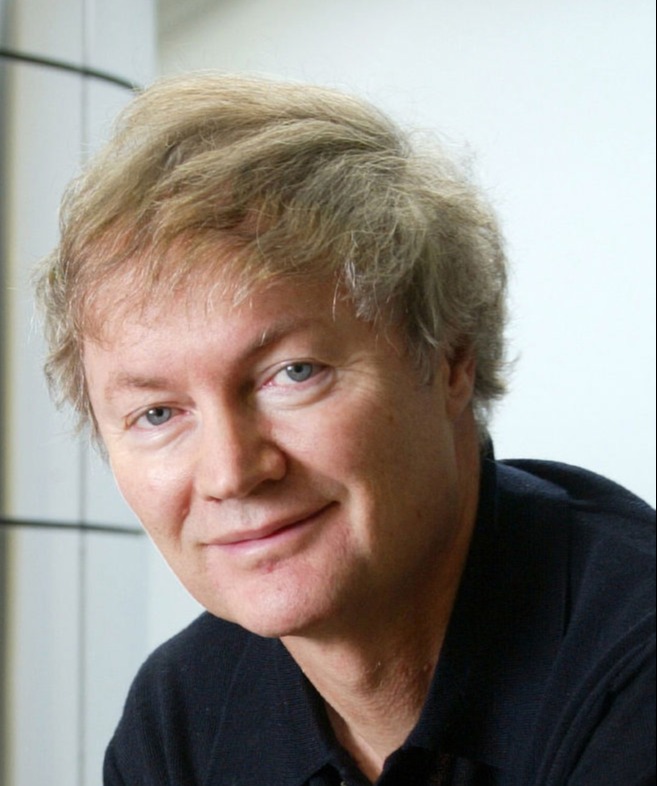Plenary Speaker
Biography
Michael Graetzel is a Professor of Physical Chemistry at the Ecole Polytechnique Fédérale de Lausanne (EPFL), where he investigates photo-induced electron transfer reactions in mesoscopic systems and their use to generate electricity and chemical fuels from sunlight.
Michael studied chemistry at the Free University of Berlin and performed his doctoral thesis work at the Technical University Berlin under the supervision of Professor Arnim Henglein. He subsequently was a postdoctoral fellow with Professor Kerry Thomas at the University of Notre Dame, Indiana (USA), investigating photo-driven electron transfer reactions and light induced charge separation in surfactant micelles and vesicles which served as a simple mimic for biological membranes. His stay in Notre Dame was supported by a grant from the Petroleum Research Foundation. After a brief return to Berlin, where he obtained his Habilitation in Physical Chemistry at the Free University under the guidance of Professor Heinz Gerischer, he moved to Lausanne Switzerland, where he joined the EPFL faculty as a professor. It was at EPFL, that he started his pioneering research on colloidal semiconductor nanocrystals and there use for solar energy conversion and storage which lead to several ground breaking discoveries. These generated new research fronts worldwide in the domain of photovoltaics, electrochemistry and photo-electrochemistry, addressing the urgent need to develop low-cost and efficient systems for the conversion of sunlight to electricity and chemical fuels. The large scientific and industrial impact of his studies is documented by over 45’000 publications in the photovoltaic domain alone and over 3000 patents both resulting from his invention.
Michael is particularly well known for his discovery of mesoscopic dye-sensitized solar cells (named after him “Graetzel cells”), which in turn engendered the advent of perovskite photovoltaics, constituting the most exciting breakthrough in the recent history of photovoltaics. He also used his revolutionary concept of three-dimensional junctions of nanocrystals also to realize photo electrochemical devices for the solar generation of hydrogen and reduction of carbon dioxide as well as for the storage of electricity in ion insertion batteries.
Michael received numerous prestigious awards for his scientific achievements. The most recent ones include: the Rank Prize in Optoelectronics. BBVA Foundation Frontiers of Knowledge Award in Basic Science, Marcel Benoist Prize, August Wilhelm von Hofmann Memorial Medal of the German Chemical Society, Global Energy Prize, Rusnano Prize, Zewail Prize and Medal in Molecular Science, Leonardo da Vinci Medal of the European Academy of Science, Paracelsus Prize of the Swiss Chemical Society, Ordre de mérite du canton de Vaud, Switzerland, King Faisal International Science Prize, Samson Prime Minister’s Prize for Innovation in Alternative Fuels (Israel), First Leigh-Ann Conn Prize in Renewable Energy, University of Kentucky (USA). Paul Karrer Gold Medal, Federation of the European Material Societies (FEMS) Innovation Award. Marcel Benoit Prize, Switzerland, Albert Einstein World Award of Science, Swiss Electric Research Award, Wilhelm Exner Medal, Gutenberg Research Award, Galileo Galilei Award, Padova Italy, City of Florence Award of the Italian Chemical SocietyBalzan Prize, Balzan Foundation, Milano, Zurich. Galvani Medal of the Italian Chemical Society Millennium Technology Prize, Balzan Prize and the Harvey Prize. He received honorary doctor’s degrees from 12 European and Asian Universities.
Michael is an elected member of the Swiss Academy of Technical Sciences, the German Academy of Science (Leopoldina), as well as the Royal Spanish Academy of Engineering and several other learned societies. He is an elected foreign member of the Royal Society (UK) , the Chinese Academy of Science. He is also an honorary member of the European Academy of Science, the Société Vaudoise de Sciences Naturelles and the Israeli Chemical Society. A recent bibliometric ranking by Stanford University places Michael first amongst 100’000 world-wide leading scientists across all fields of science. According to the Web of Science (2022), he is currently the most cited chemist in the world.
Perovskite Photovoltaics for Electricity and Fuel Generation from Sunlight
M. Graetzel
Abstract
Metal halide perovskites of the general formular ABX3 where A is a monovalent cation such as caesium, methylammonium or formamidinium, B stands for divalent lead, tin or germanium and X is a halide anion, have shown great potential as light harvesters for thin film photovoltaics [1,2]. Amongst a large number of compositions investigated, the cubic α-phase of formamidinium lead triiodide (FAPbI3) has emerged as the most promising semiconductor for highly-efficient and stable perovskite solar cells (PSCs). Maximizing the performance of α-FAPbI3 has therefore become of vital importance for the perovskite research. Using formate ions as pseudo-halides to mitigate lattice defects and to augment film crystallinity, we attain a power conversion efficiency (PCE) of 25.6 % (certified 25.2%) with a cell architecture of n-i-p configuration [3]. We further enhance light capture and largely suppress non-radiative recombination by SnO2 quantum dots as electron transport layer and an amphiphilic ammonium passivating agent at the perovskite hole conductor interface enabling PSCs with a PCE of 25.7 % (certified 25.4 %) and excellent operational stability [4] as well as intense electroluminescence reaching external quantum efficiencies of 12.5 %. Our findings provide a facile access to solution processable films with unprecedented opto-electronic performance. These fundamentally new concepts have been applied to solar driven generation hydrogen from water as well as converting CO2 to ethylene. Combining perovskite photovoltaics in a tandem with silicon has allowed reaching a solar to hydrogen conversion efficiency of close to 19 %. [9]. The current research status of this field will be presented.
References
[1] Michael Grätzel, Nature Mater 13, 838 (2014)
[2] Julian Burschka et al., Nature 499, 316 (2013)
[3] Jaeki Jeong et al., Nature 592, 381 (2021)
[4] Minjin KIM et al., Science 375, 302 (2022)

